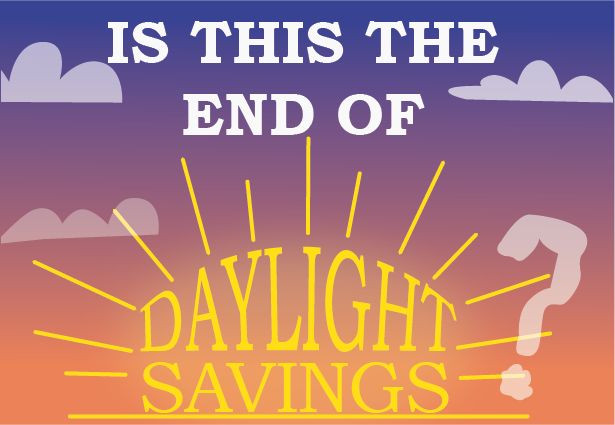As time springs forward at 2 a.m. on Nov. 6, it could be the last time we change our clocks.
On March 16, the U.S. Senate unanimously passed the Sunshine Protection Act, which would make “daylight savings time the new, permanent standard time.” If also passed by the house, the bill would take effect Nov. 5, 2023.
“I know this is not the most important issue confronting America, but it’s one of those issues where there’s a lot of agreement,” Senator Marco Rubio, one of the bill’s sponsors said in a previous article. “If we can get this passed, we don’t have to do this stupidity anymore.”
The House Energy and Commerce Committee held a hearing on the subject in March, but no further action has been taken.
“We have so many other priorities, but it doesn’t mean because it’s not a priority that we’re not trying to work on it. We are,” Rep. Frank Pallone said in a previous article, later adding, “If we can accomplish anything, it wouldn’t be until the fall.” Twenty-nine states have already passed legislation or resolutions to accommodate the change if the bill were to be signed into law. Nineteen of them were in the last five years. Federal law allows states to opt out of daylight savings time, but not to observe it permanently.
The states that follow standard time, Arizona and Hawaii, as well as many U.S. territories would be allowed to continue doing so. This would mean a year-round disconnect between states that should be in the same time zone.
In March 2022, a CBS News poll showed that 46% of residents preferred year-round daylight savings time, 33% preferred year-round standard time and 21% were fine with continuing to change the clocks twice per year.
During daylight savings time, the sun rises later. For this reason, the National Association of Convenience Stores opposes the bill saying that “we should not have kids going to school in the dark.”
Some studies have shown that daylight savings time causes people’s health and internal clock to suffer. Historically, there have also been a higher number of car accidents and workplace injuries days after the time change.
Other studies have shown a slight increase in heart attacks and strokes in the days following the change.
Supporters also say the extra light in the evening could help outdoor businesses like golf courses and ski resorts.
Daylight savings time was originally enacted during World War I to conserve energy and only lasted for seven months. It was brought back during World War II and has continued since.
The current spring-forward-and-backward model was part of the Uniform Time Act of 1966. The most recent revision was part of the Energy Policy Act of 2005. Changes mostly affected the beginning and ending dates.








